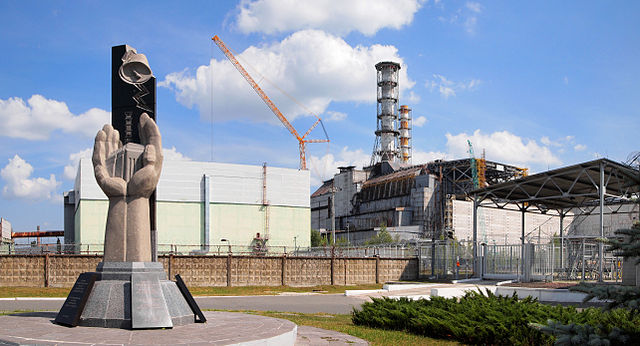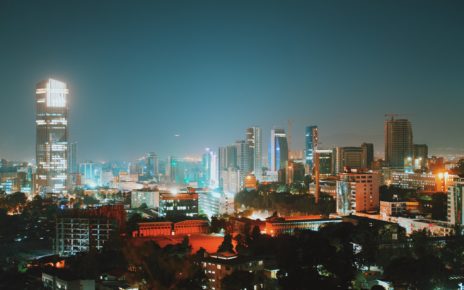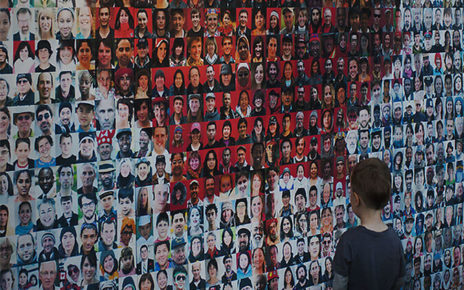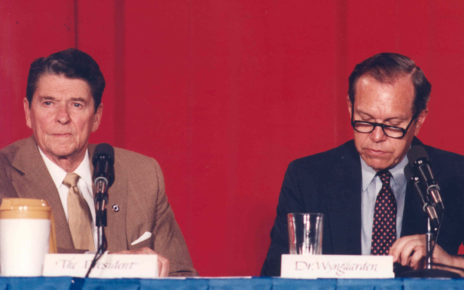On April 26, 1986, a routine power outage test was conducted on No. 4 reactor of the Chernobyl Nuclear Power Plant, near the city of Pripyat, in the Soviet Union. It should have been a harmless test, but errors by the operators and flaws in the reactor’s design led to an explosion of the reactor and the discharge of highly radioactive particles into the atmosphere. This catastrophe is recognized by the International Atomic Energy Agency (IAEA) as one of only two “major incidents” involving nuclear energy (PDF), the other being the 2011 disaster at Fukuyama, in Japan. Only incidents that pose a very severe threat to life and the environment are qualified as “major incidents”, highlighting the gravity of the event. Nonetheless, Soviet authorities engaged in a rampant disinformation campaign to cover up the incident, putting millions of lives in danger.
Attempts to conceal issues at the Chernobyl powerplant predated the infamous 1986 accident. In fact, recently unsealed KGB archives on Chernobyl reveal that four incidents occurred at the plant in 1984 alone. A year earlier, Moscow was made aware that “the Chernobyl nuclear power plant was one of the most dangerous nuclear power plants in the USSR due to lack of safety equipment.” IAEA identified this lack of protection measures as one of the central causes of the disaster. In both cases, this information was completely hidden from the public and the inhabitants of the localities surrounding the plant. There was thus no accountability from either the Soviet government or the management of the plant.
It is after the catastrophe, however, that the most extensive cover-up was conducted. On the morning of the 28 of April, a worker at the Swedish Forsmark nuclear power plant detected an abnormally high level of radiation when scanning his shoes with a radiation scanner, as was customary. At first, the powerplant management worried that the leak may have been coming from their power plant, but it was rapidly discovered that the radiation was emanating from another nuclear installation. Meteorological patterns pointed to the bordering USSR and the power plant’s workers sounded the alarm. It is only under Swedish pressure, following the discovery at Forsmark, that Moscow even acknowledged that the radioactive particles were coming from Soviet territory and that an accident had occurred, more than 48 hours after the fact. Even so, the Soviet leadership did not immediately disclose the severity of the incident stating that the “radiation situation” was under control and that the other reactors were “placed in industrial reserve” and thus not in danger. Of course, we know today this was not the case, that radioactive particles were still being emitted in the atmosphere and the surrounding area was still carpeted with highly radioactive fragments of the reactor that had exploded. It is only on 25 of August that the Soviet government, in a meeting with the United Nations and the IAEA, disclosed the full extent of the damage (PDF), an astounding three months after the catastrophe.
Lying and covering-up the truth surrounding the Chernobyl accident was part of a formalized practice regulated at the highest level of the Soviet regime, as detailed by a memo prepared on July 28, 1986, found in the aforementioned KGB archives. In this internal note, information on the following elements was explicitly forbidden from publication in the Soviet Union: the “radiation situation,” “the contamination,” the “scale of the decontamination work,” and “radioactive contamination of the natural environment, food products, and feed exceeding permissible concentrations.” The memo contains many more examples of information that was classified as secret and therefore unfit for release. What was kept from the Ukrainian people, and the inhabitants of Western Europe was not some minute detail – it was potentially life-saving information about the environmental and health effects precipitated by the disaster.
These actions beg the question of how these elements could have been kept from the public. As detailed beautifully by Hannah Arendt, the bureaucratized ‘banality of evil’ within authoritarian states often enables even normal people to cause unspeakable harm. In the case of Chernobyl, the decision not to release potentially life-saving information was made by bureaucrats in a system characterized by systematic lying within and without the organization. As detailed in a thought-provoking book, a typical attribute of authoritarian bureaucracies and that of the Soviet Union in particular is the necessity for individual bureaucrats to hide unpleasant truths. If it is not done, there are “risk[s] [of] being dismissed and substituted with plenty of officials ready to stick with the desired truth in exchange for [being part] of the regime’s nomenklatura (the USSR’s Elite).” The accident at Chernobyl is a quintessential example of this process in action, the unpleasant truth was hidden both from the higher echelons of the bureaucracy and from the public, putting lives in danger. This willingness to preserve a position of power, whether at the bottom or at the summit of the power pyramid, might be one of the central motivations for totalitarian states to engage in disinformation campaigns to the detriment of their population.
In the end, the Soviet disinformation apparatus was unable to camouflage the deadliest nuclear accident of the 20th century due to the intervention of the European community, especially Sweden. In addition, foreign news outlets aimed at the Soviet people, like Radio Free Europe, were able to provide reliable information and unveil the true scale of the catastrophe. It is in considering such tragedies that Western democracies must ensure that the right to free press remain unfettered by self-destructive bureaucracies and that news platforms remain vehicles for accountability.
Featured Image: Monument and reactor 4 in Chernobyl Nuclear Power Plant, Ukraine (2014), by Tiia Montovia Wikimedia Commons.
Disclaimer: Any views or opinions expressed in articles are solely those of the authors and do not necessarily represent the views of the NATO Association of Canada.




